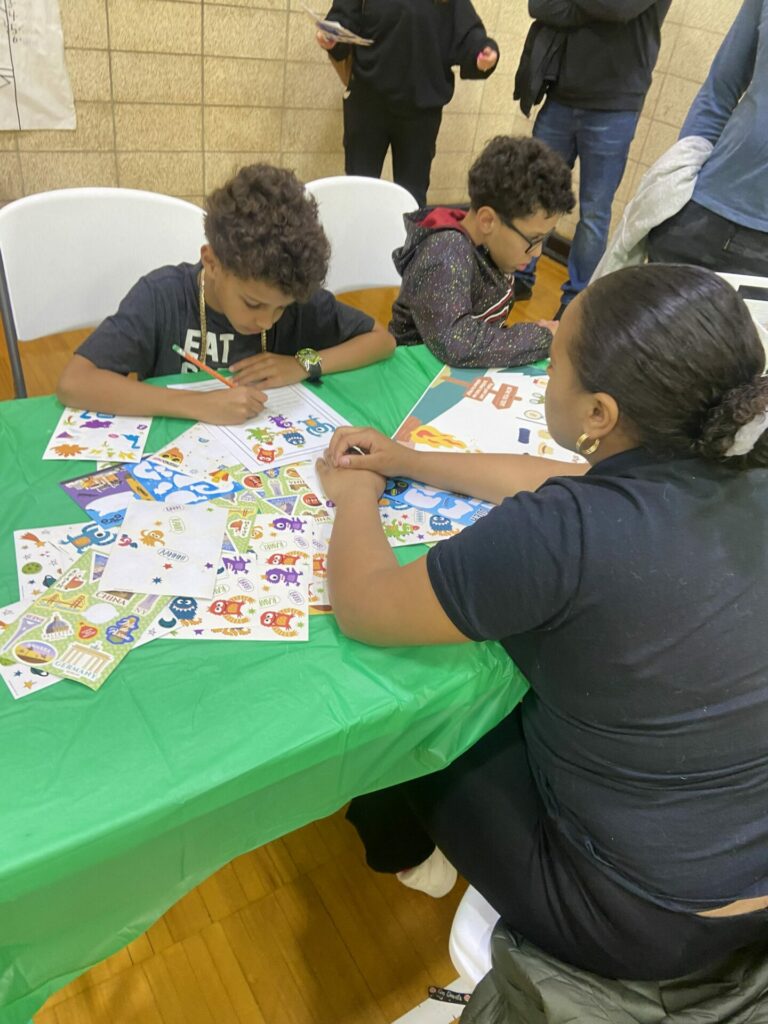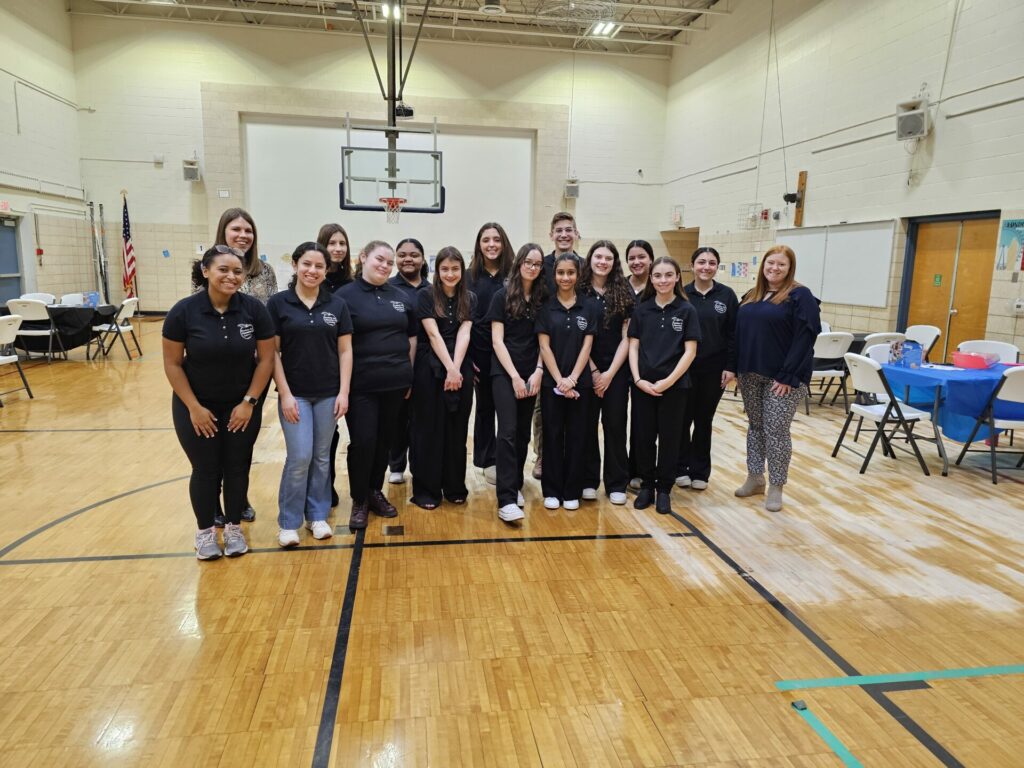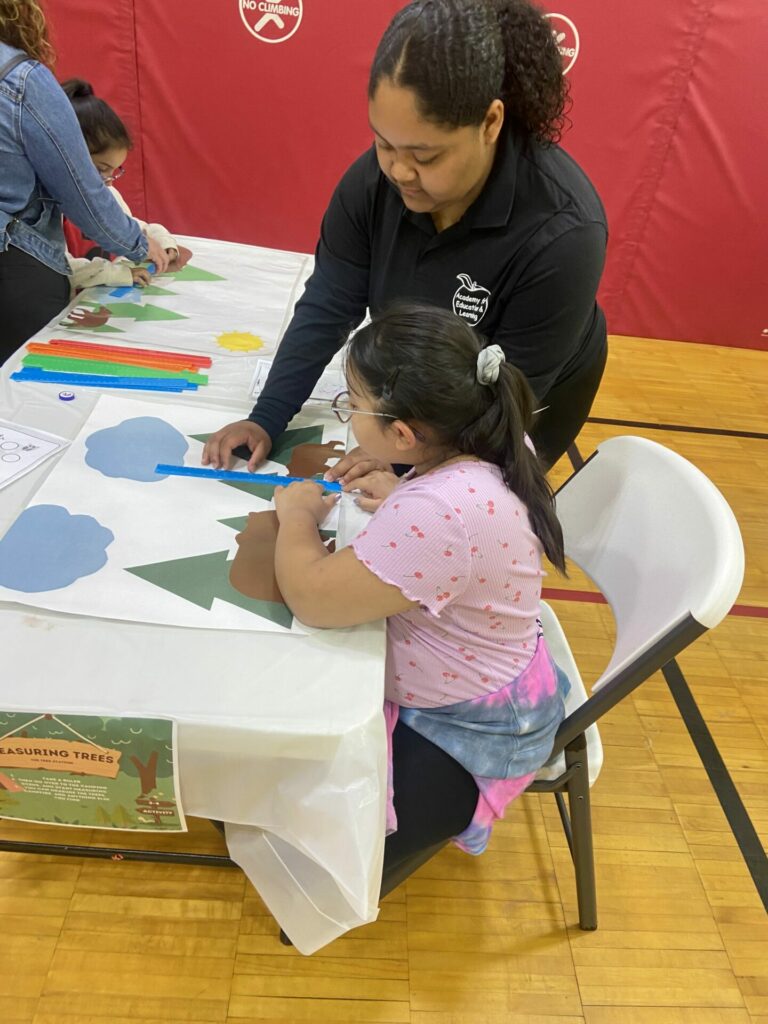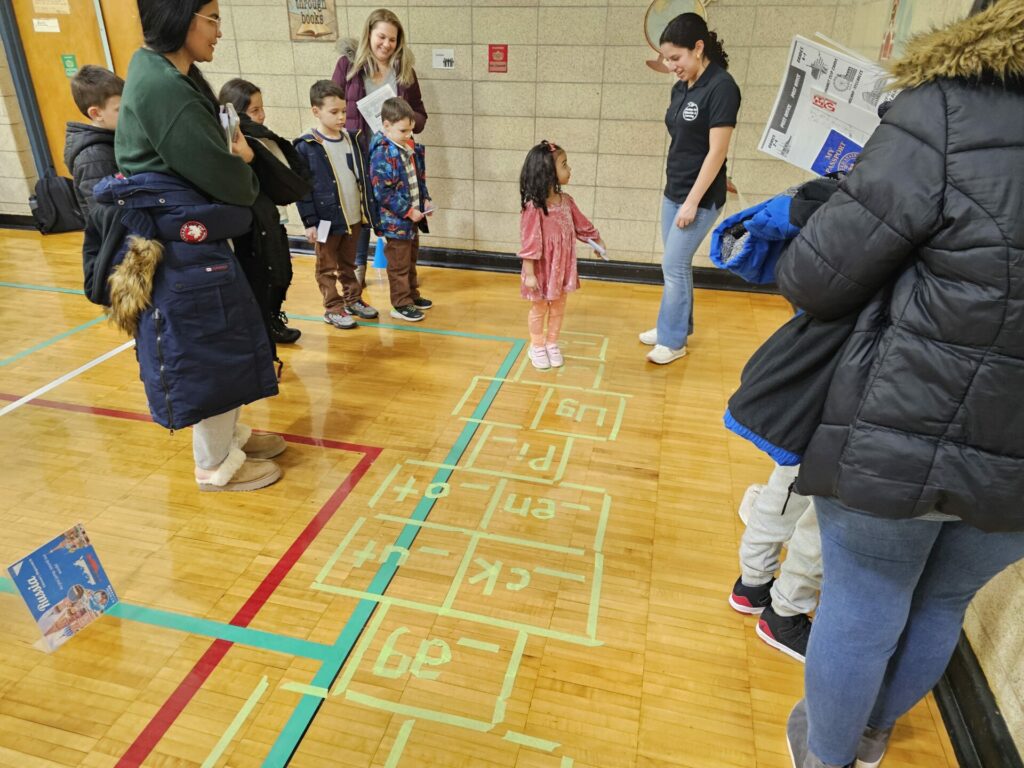High school students organize successful family events
By Students of Samantha Shane who are future educators
As aspiring educators, we devote our time in school to studying learning theories, stages of development and curriculum design. We are high school students at the Morris County School of Technology in the Academy for Education & Learning. We spend each day in our Academy class diving into the field of education.
As we studied how important parental involvement is, we found ourselves proposing to a host a family learning night. In a U.S. Department of Education study, 90% of teachers cited wanting more collaboration with parents. We felt that designing family learning nights would take the burden off teachers to plan another event and provide us with an enriching opportunity to learn more about community events.

Planning the events
Lincoln Park Elementary School, one of two schools in a small district in Morris County, was excited about collaborating with us on two family learning nights. One learning night would be centered on literacy and the other on math. Our teacher, Samantha Shane, met with Lincoln Park School District administrators and teacher Alyssa Mol to better understand their needs and communicate our vision for the event.
Our first event would be a Literacy Night that focused on providing parents with insight into how teachers instruct their students. They and their children would study reading concepts by participating in fun literacy activities.
The second event we planned would be a Math Night that focused on teaching parents and students about math concepts. With this, the parents would learn how to help their children enhance their skills in math as the students had a fun night filled with educational games.
Planning a community-wide event can seem like a large undertaking, especially with 31 students involved—there were a lot of moving parts that needed to be taken into account. While working, we had to remember the entire event would only be an hour and a half long with two tracks. One track was for students in kindergarten and first grade, and the other was for children from second through fourth grades.
The question that drove our academy toward success was, “How should we format educational activities in a way that is enriching and engaging for students of all ages, backgrounds, interests and learning preferences?”
When planning the stations, we had to ensure that the activities we chose were engaging, age-appropriate and had a lasting impact. We first focused on identifying key standards based on the feedback from the elementary school. It was important to use the information provided about the students at the school to design the activities. Using high-quality websites such as ReadWriteThink and the New Jersey Department of Education, we refined the focus of activities to be hands-on and collaborative and encourage critical thinking.
We were responsible for the following:
- Creating standards-aligned activities for students and their parents in grades K-4.
- Facilitating stations at each learning night and interacting with parents.
- Creating high-quality parent communication.
- Drafting and submittin g set-up plans to Lincoln Park.
As we planned the stations, we assigned roles to each other and used checklists to ensure all tasks were completed. Since each night had a theme, we had a small budget to purchase prizes, decorations and essential materials. The Lincoln Park Parent Teacher Organization also provided snacks for the event.
We recognize that funding can be an issue for other schools trying to plan an event like this. If funding for an event like this is a concern, staff might consult their union on how to apply for an NJEA Pride in Public Education grant. Another source to explore is the New Jersey-based organization, Bridge of Books, which donated over 800 books for us to distribute at our event. You can find Bridge of Books at bridgeofbooksfoundation.org.
As we continued to plan the event, we used Canva, an online graphic design tool, to create station materials, promotional flyers and posters.

Putting on the events
Our first event was Literacy Night. The night of the event, we arrived an hour early to set up. Materials for each station were organized into separate bins to allow for easy set up. Some activities the students participated in included hopscotch, a matching letter game, a post office, word hunt games and a life-sized version of Scrabble.
Students received a passport to carry around with them, which was stamped after each station’s completion. Students also received a map of the room labeled with each station’s location. While students were visiting centers, parents had the opportunity to learn more about initiatives hosted by the local public library to support reading. The Lincoln Park Parent Teacher Organization provided snacks for the attendees.
Jessica Tracy, a high school junior from Morris County School of Technology and graduate of Lincoln Park Elementary School, said she felt “honored to give back to [her] community and shape learning.” Jessica plans on pursuing the field of education in college and hopes to become a physical education teacher.
After the students finished their activities, they visited one of our volunteers at a station to pick out three books provided by Bridge of Books. We felt strongly that it was important that students were able to take home books to practice their skills at home with their parents.
In addition, we had a guest author, Heather Prinzo, who provided the children with a reading of her book, Looking Within. Prinzo donated several copies of her book to the event.
“Literacy night is a powerful school and community experience that brings families together to demonstrate the importance of reading,” said Prinzo. “It was such a pleasure to read at Literacy Night and have the opportunity to connect and engage with young readers and their families!”
Alyssa Mol, the Lincoln Park teacher who had first worked with our teacher, Samantha Shane, was instrumental in planning and executing the family nights. She regularly kept in communication with us.
“These evenings allowed us as educators to expose parents and guardians to the vocabulary and strategies that we use in the classroom, which allows for continuity with the students in school and at home,” Mol said.
A few weeks later, we hosted Math Night using the same format for planning. Math Night was centered on a camping theme. Stations included fishing on a coordinate “lake,” insect symmetry, measuring nature and campfire shapes. We infused literacy by having a station that included children’s books that taught various math concepts. We also ran a station using Sphero robots, which are programmable robotic balls, to infuse math and science concepts.

Lessons from hosting
In reflecting on both events, we learned valuable lessons about teaching, hosting an event, and communicating with school leaders and parents. We hope teachers and schools can use our advice to plan their own learning nights.
Here are our takeaways:
- To ensure collaboration, consider creative solutions to communicate when multiple people are working together.
- Start planning early and think about even the smallest details.
- Include voices to gain feedback and new ideas.
- Bring extra supplies to the event setup.
- Focus on the goal of the event.

MCST student Monica Guzman has Lincoln Park students using movements while learning sight words.
What’s next?
We had so much fun planning these learning nights. In the future, we hope to plan more learning nights centered on more subjects, such as history and science. We want to explore other important tasks educators face such as designing curricula, creating professional development programs and creating classroom communities.
“High school students thrived when planning and facilitating these events,” said Shane. “By providing strong support, these students rose to the occasion to plan two successful events. Teachers should explore how to implement authentic learning models in their classrooms.”
Planning a community event can seem like a daunting task. However, clear communication, meaningful goals and community involvement strongly benefit students of all ages.
Students in the Academy for Education & Learning at Morris County School of Technology have the opportunity to teach in a full-time preschool setting, intern at local schools throughout Morris County, shadow educators and learn important educational theories.
Samantha Shane’s students are exploring education as a career at the Academy for Education & Learning in the Morris County Vocational School District. Shane can be reached at shanesamantha22@gmail.com.
Student authors and editors
Grade 9 and 11 students contributed to writing this article. Grade 9 students created an outline and the initial draft. Grade 11 students served as editors adding the final touches.
Student authors: Duncan Felch, Gabriella Goodman, Erika Grissom, Krishna Maheta, Abigail Melamed, Lucie Parrish, Benjamin Picache, Francesca Piccolo, Elizabeth Quinn, Cathryn Smith, Kathryn Tubbs and Victoria Johnston.
Student editors: Lila Bazar, Monica Guzman, Ethan Statlander and Jessica Tracy
